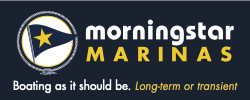Houthis Are Using an Off-the-Shelf Simrad Boat Radar; Marines Take the Hint – Peter Swanson
When all else fails, try journalism.
Halo24 Becomes Tool for Disruption of Global Commerce
Disclaimer
The information contained in the linked post (“Content”) represents the views and opinions of the original creators of such Content and does not necessarily represent the views or opinions of Salty Southeast Cruisers Net (“Cruisers Net”). The mere appearance of Content on the Site does not constitute an endorsement by Cruisers Net or its affiliates of such Content.
The Content has been made available for informational and educational purposes only. Cruisers Net does not make any representation or warranties with respect to the accuracy, applicability, fitness, or completeness of the Content. Cruisers Net does not warrant the performance, effectiveness or applicability of any sites listed or linked to in any Content.
The Content is not intended to be a substitute for professional advice. Always seek the advice of your professional advisors or other qualified source with any questions you may have. Never disregard professional advice or delay in seeking it because of something you have read or seen on the Site.
Cruisers Net hereby disclaims any and all liability to any party for any direct, indirect, implied, punitive, special, incidental or other consequential damages arising directly or indirectly from any use of the Content, which is provided as is, and without warranties.



























Comments from Cruisers (2)
Harbor clearance plays a critical role in maintaining the safety, efficiency, and ecological balance of maritime environments. Whether following natural disasters, vessel groundings, or routine dredging operations, harbor clearance ensures that ports and shipping lanes remain navigable and free from hazardous debris.
Modern clearance operations use a blend of traditional diving techniques and advanced technologies such as sonar mapping, remotely operated vehicles (ROVs), and specialized salvage equipment. These tools allow teams to quickly assess underwater obstructions, prioritize removal efforts, and minimize disruptions to port operations. Precision is crucial—not only for the restoration of maritime traffic but also for protecting delicate marine ecosystems.
Strategically, harbor clearance is essential to global trade and national security. Blocked ports can cause significant economic losses, delay critical supplies, and pose threats to environmental health if hazardous materials are involved. As such, clearance operations often align closely with government compliance standards, environmental protection regulations, and maritime safety protocols.
Today’s harbor clearance teams are multidisciplinary, combining expertise in commercial diving, engineering, environmental science, and logistics management. Innovations in salvage technology, such as high-capacity lift bags and hybrid-powered underwater vehicles, are enhancing capabilities and reducing operational footprints.
With increasing climate risks—such as stronger storms and rising sea levels—harbor clearance efforts are becoming more frequent and complex. Forward-thinking strategies that integrate resilience planning and sustainable practices are critical to ensure the longevity and safety of the world’s maritime infrastructure.
Source: https://resolvemarine.com/services-capabilities/government-relations
Alas, blocked by a paywall.